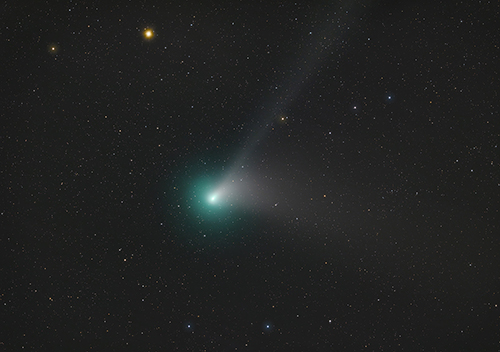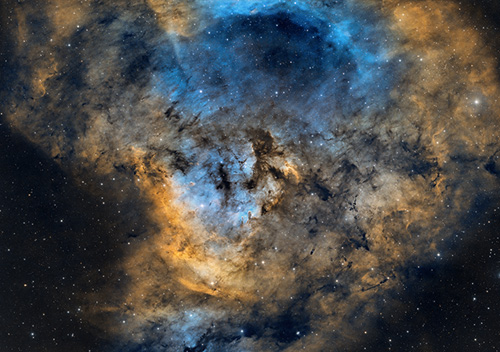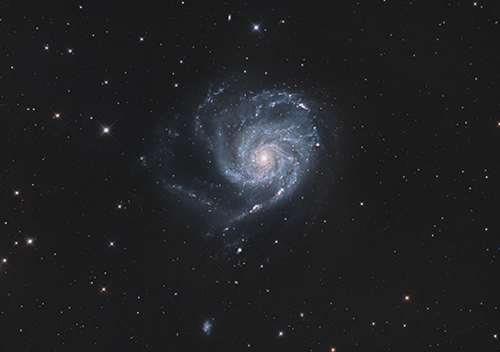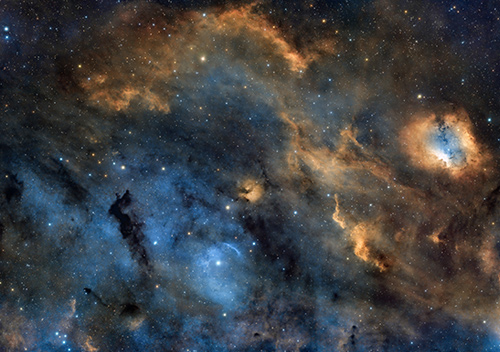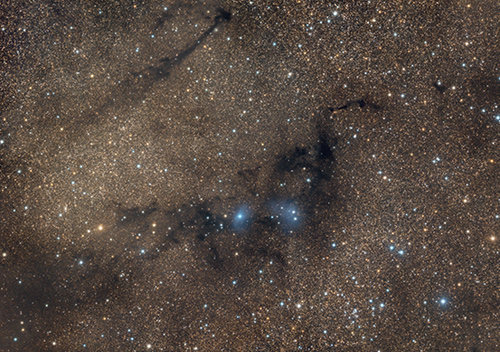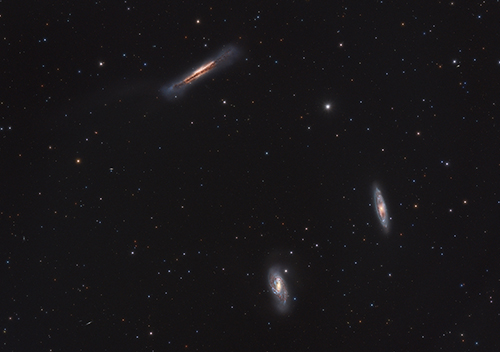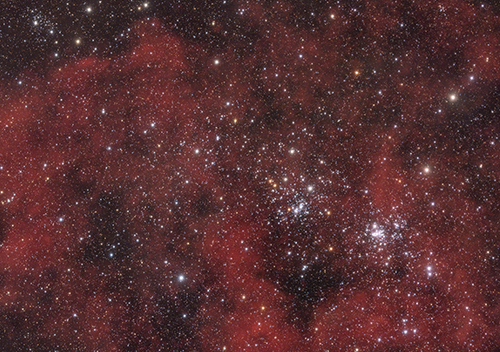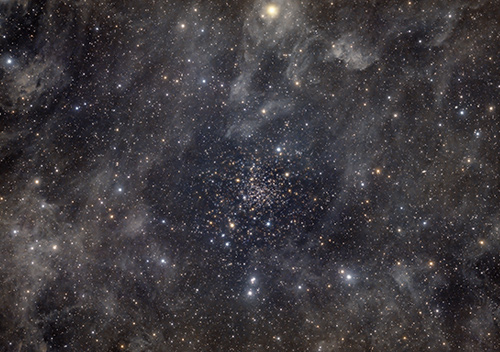
The Butterfly Nebula in HOO
IC 1318
The Butterfly Nebula (IC 1318) in the constellation of Cygnus is one of the most popular objects in the summer sky. Surrounding the supergiant star Sadr (Gamma Cygni), there is a variety of gas and dark nebulae that make this area incredibly fascinating! IC 1318 is a diffuse emission nebula, situated approximately 4,000 light-years away from Earth. The nebula spans an area of about 70 light-years and is characterized by its intricate and delicate structure, resembling the wings of a butterfly, hence its name.
IC 1318 is predominantly composed of ionized hydrogen gas, which gives it its characteristic reddish glow. The intense radiation emitted by nearby young, hot stars excites the hydrogen atoms, causing them to emit light. This process, known as ionization, creates the stunning visual display seen in the nebula.
Within IC 1318, there are several regions of active star formation. The high-density pockets of gas and dust serve as nurseries for the birth of new stars. These young stars, often embedded within the nebula, illuminate their surroundings and sculpt the surrounding material through their powerful stellar winds and energetic radiation.
This is an alternative bicolor version (HOO) to my SHO image of the Butterfly Nebula.

IC 1318 is predominantly composed of ionized hydrogen gas, which gives it its characteristic reddish glow. The intense radiation emitted by nearby young, hot stars excites the hydrogen atoms, causing them to emit light. This process, known as ionization, creates the stunning visual display seen in the nebula.
Within IC 1318, there are several regions of active star formation. The high-density pockets of gas and dust serve as nurseries for the birth of new stars. These young stars, often embedded within the nebula, illuminate their surroundings and sculpt the surrounding material through their powerful stellar winds and energetic radiation.
This is an alternative bicolor version (HOO) to my SHO image of the Butterfly Nebula.
Image Details
| Date |
june 4, 10 & July 17, 2023 |
| LOCATion |
Hannover (Germany) |
| Sky Quality |
Bortle 5 |
| Telescope |
Celestron RASA 8 (203/400 f/2) |
| Mount |
Skywatcher EQ6-R Pro |
| Main Cameras |
TS 2600 MP Gain 100, Offset 50, -10° ZWO ASI 2600 MC Pro Gain 100, Offset 18, -10° |
| Focuser |
Celestron Motorfocus |
| Processing | Astropixelprocessor, Photoshop, Pixinsight |
| Filter |
Baader H-Alpha Highspeed 3.5nm Baader O-III Highspeed 4nm |
| Exposure |
Ha: 95 × 120″ (3h 10′) OIII: 95 × 120″ (3h 10′) RGB (stars): 70 x 10'' (11' 40'') Total: 6h 31‘ 40'' |
| Guiding |
ZWO ASI 120MM, PHD2 |
| Calibration |
Flats, Darks, Darkflats |
| Software |
N.I.N.A., EQMod |
| Other |
Artesky Filter Holder |

Gallery















